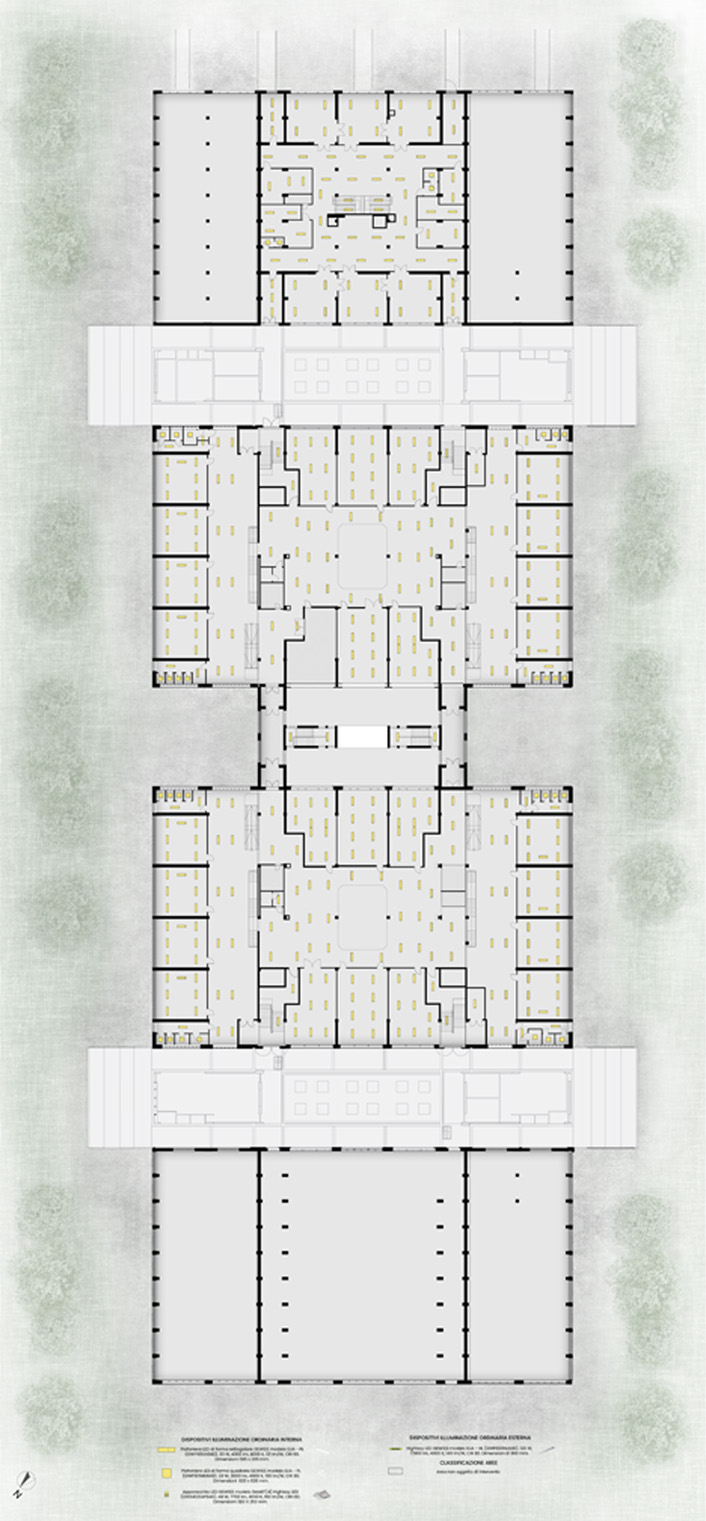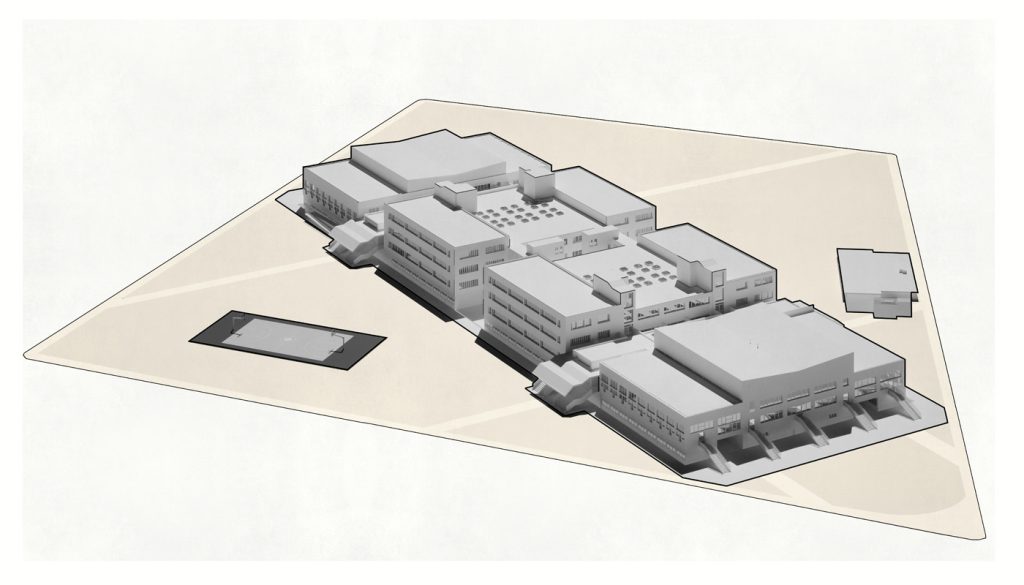Energy efficiency multi-purpose building | Turin
The purpose of this project is to identify and describe all the interventions necessary to ensure the energy redevelopment of a multifunctional building located in the municipality of Turin containing a nursery school, a kindergarten, a primary school, a lower secondary school, a gymnasium, a swimming pool, and premises in the basement for use by the district.
Energy efficiency interventions.
1. Rampling intervention
The first energy efficiency intervention involves replacing the existing lighting fixtures, which consist of incandescent, fluorescent, or halogen lamps, with new LED lamps.
The LED lamp is a lighting device based on the use of light-emitting diodes, which are optoelectronic devices that exploit the ability of certain semiconductor materials to produce photons through a phenomenon of spontaneous emission when subjected to an electric current.
LED technology offers several advantages. In addition to contributing to an increase in lighting comfort, this type of lamp is designed to guarantee a lifespan of 50,000 hours, compared to a lifespan of 2,000 hours for halogen lamps and 1,000 hours for incandescent bulbs, resulting in savings on maintenance expenses.
There are also numerous environmental benefits, such as lower heat dissipation, reduced carbon dioxide emissions, absence of polluting chemical substances, and the possibility of being powered by renewable energies.
The conversion takes place through an operation called Plug&Play, meaning that the lamps are replaced without modifying the existing electrical system structures.
2. Insolation of the heat exchangers in the district heating system
Thermal insulation of the three active heat exchangers is planned, two for the district heating and one for domestic hot water, using suitable enclosures made of insulating material.
This intervention will prevent the heat loss that currently occurs between the plates of the heat exchangers and the installation environment.

3. Replacement of circulating pumps in the boiler room
The replacement of the current district heating circulating pumps in the boiler room with new electronic variable-speed pumps is envisaged.
The new pumps must ensure the same electrical and mechanical performance as the current ones and will allow the speed of the heat transfer fluid passing through them to be adjusted based on electronic control, managed by the BMS, thus always ensuring the required flow rate.
4. Installation of thermostatic valves on radiators
For the proper functioning of the heating system and to contain energy consumption, the installation of thermostatic valves is considered a fundamental intervention to more effectively control the internal temperature of each room.
The chosen thermostatic valves are equipped with an automatic flow regulator (referred to as “pressure independent” or “dynamic”).
This system allows for optimizing the hydraulic balance of the system by setting the design value of the maximum flow supplying the radiator.
Any variation in the differential pressure between the inlet and outlet of the valve is compensated for by the movement of the internal insert, which constitutes the true automatic flow regulator.
The chosen “dynamic” thermostatic valves are made of brass with square/straight connections for iron/copper/plastic pipes, equipped with a spindle and EPDM sealing gasket, chrome-plated steel return spring, brass/EPDM valve insert, cap, and ring for pre-adjustment insertion.

5. New BMS system in the thermal plant
The intervention to replace the Building Management System (BMS) involves replacing the components that currently manage the heating and domestic hot water production system for the entire complex, with the ability to monitor and manage parameters remotely.
The user interface allows for collecting, controlling, and integrating data from different systems to measure and optimize the performance of a building in terms of comfort, productivity, energy efficiency, and sustainability.
It allows for monitoring energy consumption and environmental parameters as well as controlling technical systems.
Connectivity with the monitoring system is provided by Ethernet or GPRS devices that establish bidirectional communication between:
- Field devices
- User interface
The thermal plant to be remotely monitored and managed consists of a generation system powered by district heating.
There are two heat exchangers for heating and an additional heat exchanger for domestic hot water production.
The building’s heating system is divided into five circuits, each equipped with its circulation group.
The BMS system detects the operation of the circulators, the mixing temperatures of the various circuits, the outdoor temperature, the indoor temperature in different building environments, and the supply temperatures of the heat exchangers.
Based on the above detections, the system allows for managing the system by controlling the opening or closing of the mixing valves of the various circuits and the activation of the circulators.
The system for domestic hot water production for the building is equipped with a recirculation network, with a circulation group and a dedicated valve.
The BMS system detects the operation of the circulators and the supply temperature of the heat exchanger and can control the opening or closing of the valve on the heat exchanger’s supply.


